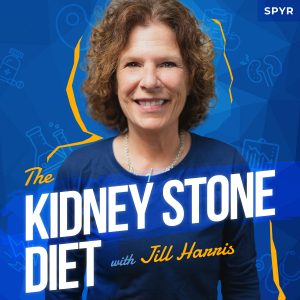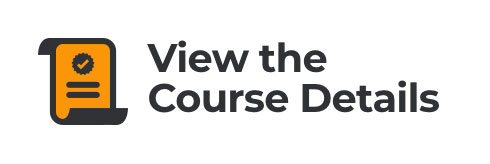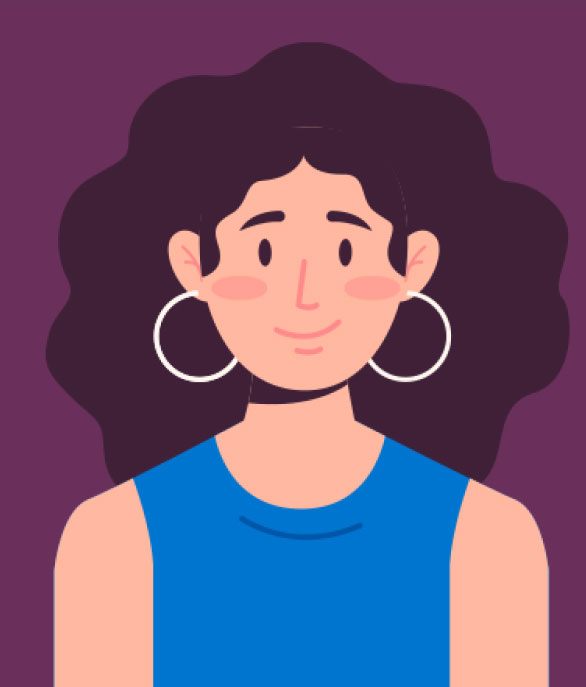This week, Jill answers a listener question about wheat and kidney stones.
Jeff Sarris: Welcome back to the Kidney Stone Diet podcast, the show about reducing your kidney stone risk and living your best life. I’m your host and fellow student, Jeff Sarris.
Jill Harris: Hi, Jeff! It’s Jill! Jill Harris, your kidney stone prevention nurse.
Jeff Sarris: I like it’s on a video call just like, “Hi, it’s me!”
So we’re back again with another listener question this week and, I don’t know, maybe we just jump right in?
Jill Harris: Yeah, let’s jump right in! Let’s treat the audience with us not blabbing today. Let’s go!
Listener Voicemail: Hi, my name is Mary. And today, I just looked over the oxalate chart that Jill has to just study it and learn things. The one thing that kind of caught me off-guard was Mini Wheats. When I had pericarditis, they told me that Mini Wheats did not have salt in it and to eat that. Now, I’m guessing the reason that it says “no,” is it because of the wheat? You can’t have wheat when you’re on this oxalate diet? Thank you for all your help.
Jill Harris:
I think Mary is saying Mini Wheats, as in the cereal, is that correct?
Jeff Sarris: Yeah, it sounds like it.
How Should I Eat if I Have Multiple Medical Conditions, Not Just Kidney Stones?
Jill Harris: Okay, so Mary is saying–this is very common, not this specific question, but people are always like this, “I got this and my doctor said, ‘This food is super good for this.’ And also I have kidney stones. I heard and Harvard says, ‘This is high in oxalate.’ So now what do I do?” So we’ve done videos on this before. It’s conflicting information, I have different medical conditions, what do I do? And it comes up a lot. I think we, as patients, whether you have kidney stones, cancer, the heart issues, diabetes, whatever we’re dealing with, it’s like, maybe you are dealing with multiple medical conditions.
You’re dealing with multiple medical conditions, and each person who’s helping you is telling you to do a different diet. How the heck do you put all this stuff together? So, that’s basically the question. Unless somebody’s telling you to eat spinach and almonds, you can have pretty much whatever on a low-oxalate diet. The key is this: Mary says, ‘My doctor says Mini Wheats is low-salt.” That doesn’t mean that Mary should be eating Mini Wheats all day long. Now, I’m not saying Mary is, but because I’ve worked for years with thousands and thousands of people, I kind of know what they do. When we hear–okay, I’m going to throw me under the bus because we can all fall prey to this.
When I was going through all my cancer stuff, and I had an ileostomy, which was they took my rectal cancer out, and they had to let my colon rest because, you know, they cut things up. They had to divert my stool into a bag outside my body, so that’s what an ileostomy is. So my small intestine was here, and a bag was around it. So my stool would come out in this back and I’d have to change it. “Why are you telling us this? This is gross, Jill!” I’m telling you, listen! Don’t go nowhere. Just listen. So the colon’s job is to take the fluid out of the stool, and then it hardens up, and we poop it out–so it takes the water out, absorbs the water from the stool.
Well, in your small intestine, it’s very watery. So what was coming out my bag was very watery. So the doctor would be like, ‘Oh, you’re losing a lot of fluid. You know, eat some white food, like carbs, you know, blah, blah, blah.’ And so I don’t eat carbs, people. I eat very low-carb. That’s just how I roll. That’s how my body feels good. I’m not saying you need to do that. I’m just saying what I like to do. I have most energy from that, but at that point when I had that ileostomy for six months, then it came down. I was still so freaked out about my medical condition and being sick. I ate that way for like six months later, and I was really blowing up and I wasn’t getting any better because carbs don’t work for me.
So what I’m saying is this: when our doctors tell us something that will help our medical condition, we’re just mono-focused on that. And, even me, who does this for living, lost sight of the big picture. One day I woke up and I’m like, ‘What the hell am I doing? I don’t need to do this anymore.’ But, again, when we’re sick, we get anxious and we don’t think right. And this is, again, why I so love this for a living, because I think being a patient with my own illness, taught me more even way more on how to connect with people who are ill.
Let’s Talk About Mini Wheats
So, in a way, it brought me even more human connection to my fellow patients that I talk to every day. What I’m wondering about Mary–and, of course, only you can answer this–you’re very focused on the Mini Wheats. Do you want to eat them every single day for breakfast? What I’m trying to get at is, they may be low in salt, which is great for your pericarditis, but there’s lots of foods you can have for breakfast that are low in salt, so I just want to put that out there. And then, the other thing I want to put out there is if they are and I don’t know how much oxalate’s in them offhand, but wheat does tend to be high. There is a bread video on this channel as well, “Can I eat bread?”
A lot of people think they can’t, because wheat is higher in oxalate. But remember guys, how much wheat is in the one slice of bread you’re eating? How much wheat is in the normal suggested portion size of your Mini Wheats? And, if you’re eating them with a calcium-based liquid, it’s okay, because the calcium is going to bind with the oxalate and it won’t be absorbed into the body. So, it’s okay, but pay attention to whatever the oxalate level is. You all get 100–unless a doctor has told you differently in the example of like a bariatric patient. They may get less oxalate, like 50 milligrams per day instead of the 100, so make sure your doctor has told you–but on average, most people can easily have 100 milligrams of oxalate a day, along with getting enough calcium every day, so you don’t over absorb the oxalate.
If you’re going to have a higher oxalate food, whatever Mini Wheats is, number one, is it really high? Is it? Is it 10 milligrams of oxalate per serving? You have 100. You’ve got a lot left. I wouldn’t think it’s more than 10, but you know, you have to look on the Harvard list.
Jeff Sarris: So, I did just look and one cup is 28 milligrams.
Jill Harris: Okay, so if you’re having one cup–okay, I’m glad you checked, so that’s almost 30. So, my question to Mary is–so there’s a few things she can do. She’s going to have that with a calcium-based product. If she wants that for breakfast, can she have half a cup? And that’s whatever. 16? What is it then? What’s half of 28? I’m a nurse, not a mathematician. What is it, Jeff?
Jeff Sarris: 14.
Jill Harris: God bless! So, 14. Is that where you want to spend your oxalate? If you’re telling me, Mary, “Yep, I love them, girl. I love them. And that’s what I want.” Then again, what am I going to say? God bless, go for it! But, notice, that you’ve already taken up 14, okay. If you want the 28, you could do that, too, but I’m just saying if it were me, I’m not wasting 20 milligrams of oxalate on some Mini Wheats. If you want to do it once or twice a week, fine, but there’s many low-salt options for breakfast. You can have fruit, you can have Ezekiel bread, low sodium, no sodium. You can have yogurt. There’s plenty of other things that will fit a heart-healthy diet and the Kidney Stone Diet.
Use my meal plan. You’ll get 100 different ideas–many, many ideas for breakfast. All simple, 5-10 minutes, all low salt. So, go to kidneystonediet.com for that. Plenty of choices there. Oatmeal! I mean, you know, there’s so many things you can have. So what I’m afraid of–although Mary may be sitting back, thinking, “Listen, girl, I’m not saying I’m having it every day.” But just because she’s asking and worried, it tells me that that’s going to be her go-to. So, she has different choices. She could have the full cup. She could have half a cup. She could use that as a snack somewhere as a half a cup in her day and then pay attention to her oxalate for the rest of the day and easily fit that in.
You Need to Switch-Up Your Go-To Meals
From my experience with patients, when they’re asking me about one food, it’s because they want to eat it a lot. Otherwise, they wouldn’t be asking about it because they’re like, “I’m only going to have this once a month.” You know what I’m saying? We, as human beings, like our staple breakfast that we go to for 100 years. I hear this every day, “Jill, I eat my oatmeal with blueberries and my milk every day. I’ve had that for 25 years and that’s what I’d like to keep.” Well, the body might want something else. I’m just saying. It’s a very intricate machine and may want something else than oatmeal. You know, this is what we do because we don’t want to think about food.
We want to go on autopilot. So when patients come to me and tell me–we go over what they do every day. They do a trepidatiously, “Oh shit, she’s gonna ask me and I’m gonnna have to tell her, blah, blah.” I push back and I say, “Okay, I hear that you like that oatmeal. I hear it.” Or, “I know you like blueberries and you eat a bushel every day. I hear you. I’m just saying, as I always say, when you go into the produce section, wow. So much offering. There’s so much offered there. Push yourself! Get a blackberry!” “Oh, Jill, I couldn’t possibly!” “Just think about it, Charles. Think about it! And next week, when we meet, let me know how it goes.”
And he writes me or calls me and he says, “God, Jill, I like them. I like them a lot.” Many times we base what we’re doing every day how we felt when we were 12. “Oh, Jill, I don’t know why I eat bologna sandwiches with mayonnaise.” “Well, what’d your mother pack you for lunch? Oh, come to think of it, bologna sandwiches with mayonnaise.” Things become habits. We go on autopilot. I’m challenging all our listeners right now: can you add different produce every week? “Jill, it’s high oxalate!” I have a high-fiber, low-oxalate–
Jeff Sarris: Uh oh, I lost your video. There you are! Okay, you’re back!
Jill Harris: I have a high-fiber, low-oxalate produce list. Just Google that. “Jill, high-fiber, low-oxalate produce list.” Google that and you’ll get a nice chart. Our partner Dave made it. It’s beautiful. Tack it, take a picture of it, and put it on your phone so when you go to the grocery store. Look at all the stuff you can have! We give those free resources out, so you can, at a glance, see, “Hey, I don’t have to eat blueberries for the rest of my life. I can eat all of these!” And what I find when patients go on a low-oxalate diet, because they have not been educated properly and they’re so afraid of making a new stone, their fiber content and their daily life goes way down. Now they’re constipated.
And they’re even more constipated because now they’re introducing dairy back into their diet for those that are using dairy to get calcium. Again, there’s so much that people do and don’t do based upon habits, lack of education, misinformation, all kinds of stuff. So our job here is to get all this stuff in little, doable, common sense, practical nuggets, so you can be stone free, lessen your chance for any kind of disease, get your weight in check if you need to do that, and live a healthier life. When you feel strong and energetic and healthy, this does, too. This and this go together. So once you educate this, you can help this–your body. And I’m pointing to my head Spotify and Apple Music people–and my body.
Once you rethink and use your head on how you should nourish your body, and how you talk to yourself–all the emotional things we go through, how we cope with it–hopefully not with food anymore–and we learn to nourish our body properly. And that means understanding what does a low oxalate diet mean, especially if you have conflicting dietary information from different people. That can be very confusing to patients just like it is to Mary. She wants to keep our heart healthy and she wants to watch her sodium because she’s a kidney stone former and a heart patient, so she was told Mini Wheats are good. My inclination says to me that Mary wants to eat those a lot because that’s a safe food for her. So, there’s all that. That’s it, Jeff. That’s what I got.
Jeff Sarris: Yeah, that was perfect. And thank you, Mary, for the question. I think that’s a wonderful question just to touch on for everyone. If you’re listening and you have a question, that number is 773-789-8763. We’d love to feature you on a future episode. With that, you can head over to kidneystonediet.com if you want to dive into any of the free resources, sign up for the weekly email newsletter that Jill sends out every Saturday, find the Kidney Stone Prevention Group, or the course, or the meal plans that Jill alluded to earlier. We appreciate you for taking your time, listening, for calling in and giving us these great questions to answer every week. With that, we’ll sign off and see you next time.
Jill Harris: Thanks, everybody. Subscribe if you’re liking the videos, and thank you, Mary. Wonderful question. Everybody have a great day!














Leave a Reply